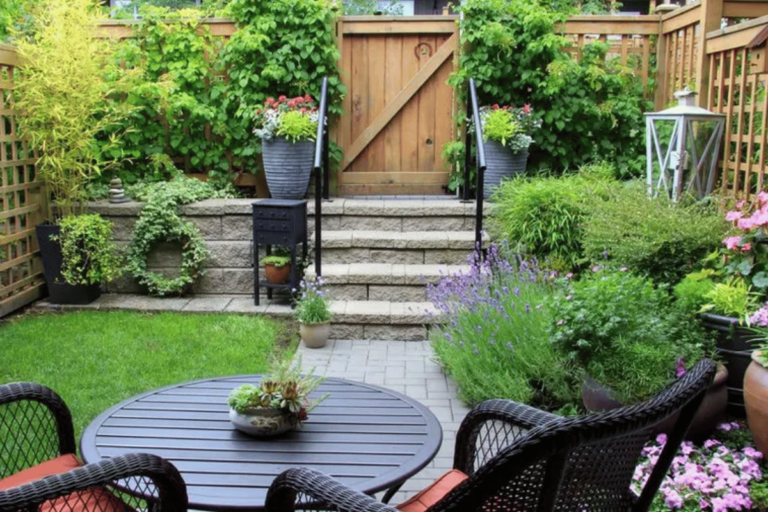Choosing Easy-Care Plants for Your Landscape
Low-maintenance landscaping is the ideal method for an attractive garden
that does not require much time to manage. Selecting easy-care plants for your
climate and soil conditions is the key to creating a low-maintenance garden.
Native plants are a great pick as they adapt to local weather, requiring less
water, fertilizer and pest control.
Selecting Native Plants
It makes native plants an option as they thrive in the local climate and
soil. These plants are extra resistant to local pests and diseases and need
less water or fertilizer. Using native vegetation in your landscape can make it
sustainable and easy-care.
For instance, consider using coneflowers, black-eyed Susans, little bluestem
and switchgrass (native grasses). The plants can adapt well to indigenous
species; their adaptation into the locality serves as a habitat and nourishes
local fauna.
Perennial Plants
One reason why perennials are recommended for low-maintenance gardens is
that they come back annually, so you do not have to replant them every year one
by one. Look out for drought-tolerant species which require less watering or
disease-resistant varieties that reduce chemical treatment requirements.
For example, popular perennials include daylilies, hostas, and ornamental
grasses, which require minimal care but last a long time.
Incorporating Ground Covers
Ground covers help suppress weeds, thus reducing maintenance work in gardening
keeping them healthy while stabilizing soil. On the other hand, creeping thyme
or ajuga forms massive pads covering ground level, suppressing mulching
activities typically required. At times, weeding could occur under trees with
slopes where mowing becomes challenging. Ground covers have their value.
For example, creeping thyme is a fragrant ground cover that attracts
pollinators such as bees and requires minimal care. Sedum is a drought-tolerant
ground cover that has colourful foliage and flowers.
Time-Saving Tips for a Gorgeous Garden
Designing a low-maintenance garden involves strategic planning and
intelligent gardening practices. One practical approach is to group plants with
similar water, light, and soil requirements. This design simplifies watering
and maintenance by tailoring your monthly care to each plant group.
Grouping Plants
Together, group plants according to their similarity in water, light or soil
requirements. This practice makes it easier for you to take care of your garden
since it will be possible to water and maintain each plant group in line with
its particular needs.
For example, put together drought-tolerant plants in a sunny area, while
moisture-loving ones should be placed in shadier spots with more consistent
moisture.
Using Mulch
Mulch is the best tool in a gardener’s arsenal who wants easy landscaping.
It suppresses weeds, retains moisture in soil, and improves soil health.
Organic mulches, such as wood chips, bark or straw, decompose over time and add
nutrients to the soil.
For example, mulch should be applied around the stems of plants and garden
beds correctly, not piling it over tree trunks or other plant parts that can
rot or get diseases because of this practice.
Automated Irrigation Systems
Automated irrigation systems save a lot of time in the garden. Drip
irrigation systems are advantageous since they release water directly at the
roots, thereby minimizing evaporation and runoff effects from the above-ground
sectors surrounding such irrigation lines. Scheduling watering times through
timers or sensors based on moisture can also ensure that an adequate amount for
every crop type reaches them when required.
Example: You can set up an efficient drip irrigation system in your garden
where you install a timer with sensor devices to monitor its watering
activities, conserving water since plants are always supplied with adequate
water.
Minimizing Lawn Areas
Lawns can be high-maintenance, requiring regular mowing, watering, and
fertilizing. Consider minimizing the size of your lawn and replacing some areas
with low-maintenance ground covers, shrubs, or hardscapes like gravel paths and
patios.
Example: To reduce the lawn area, mix garden beds, ground covers, and
hardscapes. This approach reduces maintenance and adds diversity to your
landscape.
Choosing Low-Maintenance Hardscaping
Incorporate hardscape elements like stone pathways, gravel areas, and patios
to reduce the amount of planting space and create functional, low-maintenance
outdoor regions.
Example: A gravel path or stone patio requires little to no maintenance and
provides a durable, attractive surface for walking and entertaining.
Conclusion
Low-maintenance landscaping allows you to enjoy a gorgeous garden without
spending too much time and effort. You can create an eye-catching but less
demanding landscape by selecting easy-care plants, using mulch, installing
automated irrigation systems, and including hardscapes in your yard designs.
Embrace these strategies to transform your yard into an effortless oasis of
beauty and tranquillity. A green, lush garden can be achieved with minimal care
throughout the year with thoughtful planning and the right plant choices aimed
at least care requirements by using appropriate xeriscaping techniques.
Explore More Gardening Tips and Ideas
Source: Low-Maintenance Landscaping Ideas


